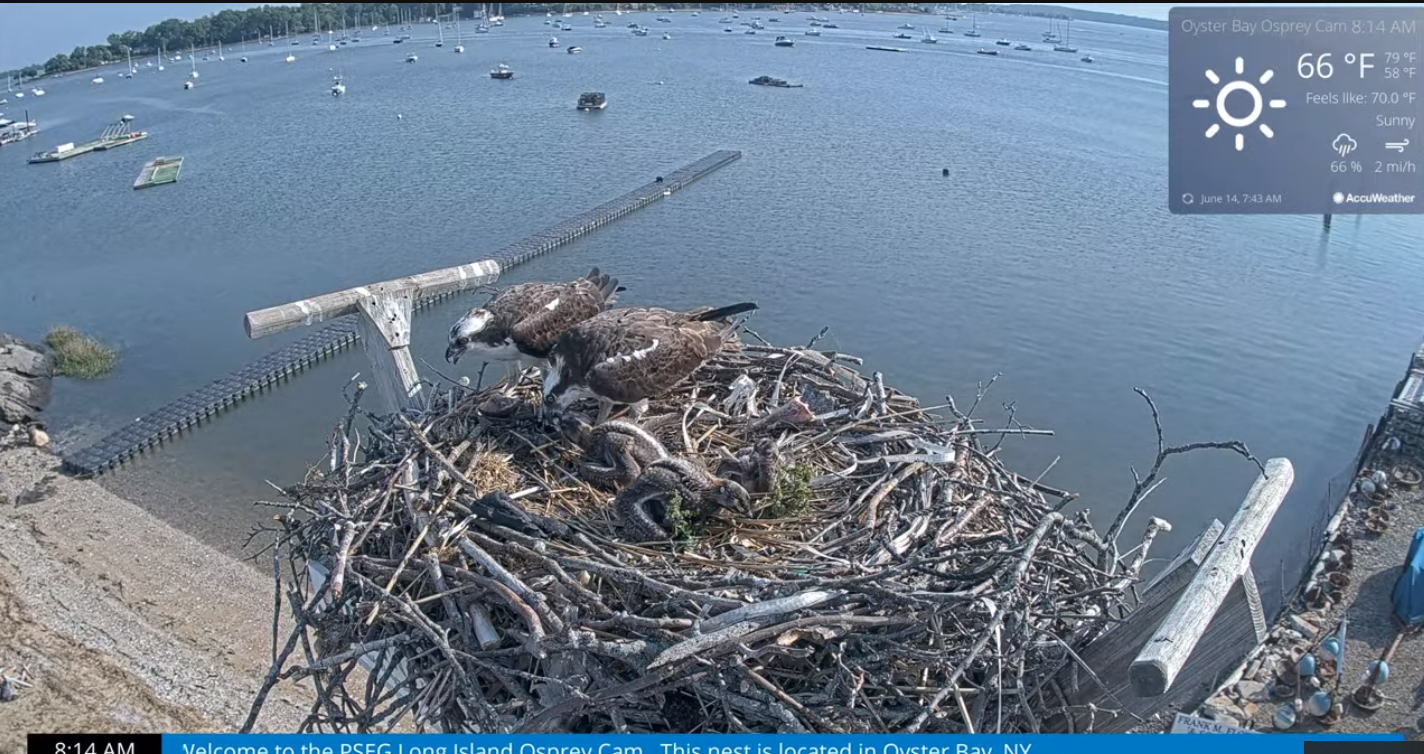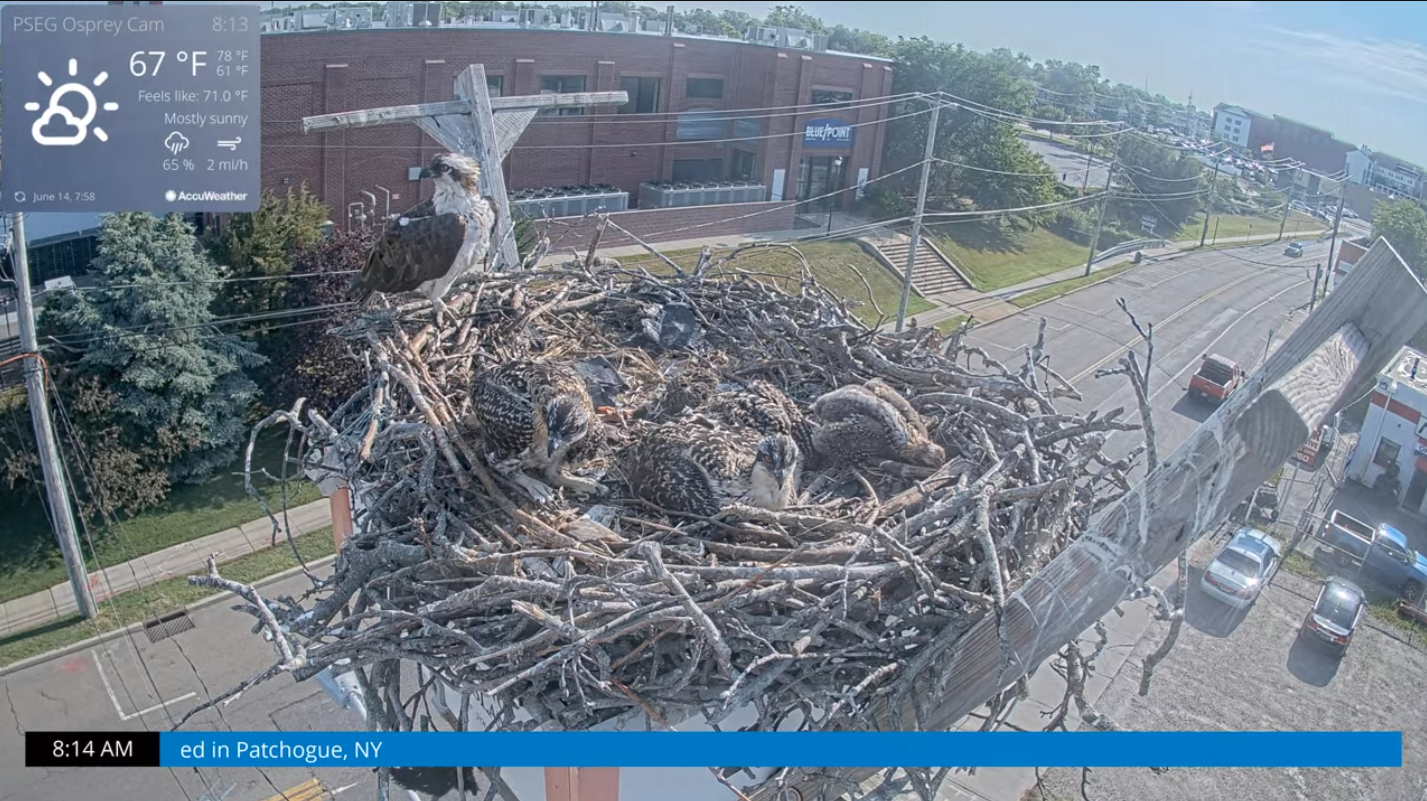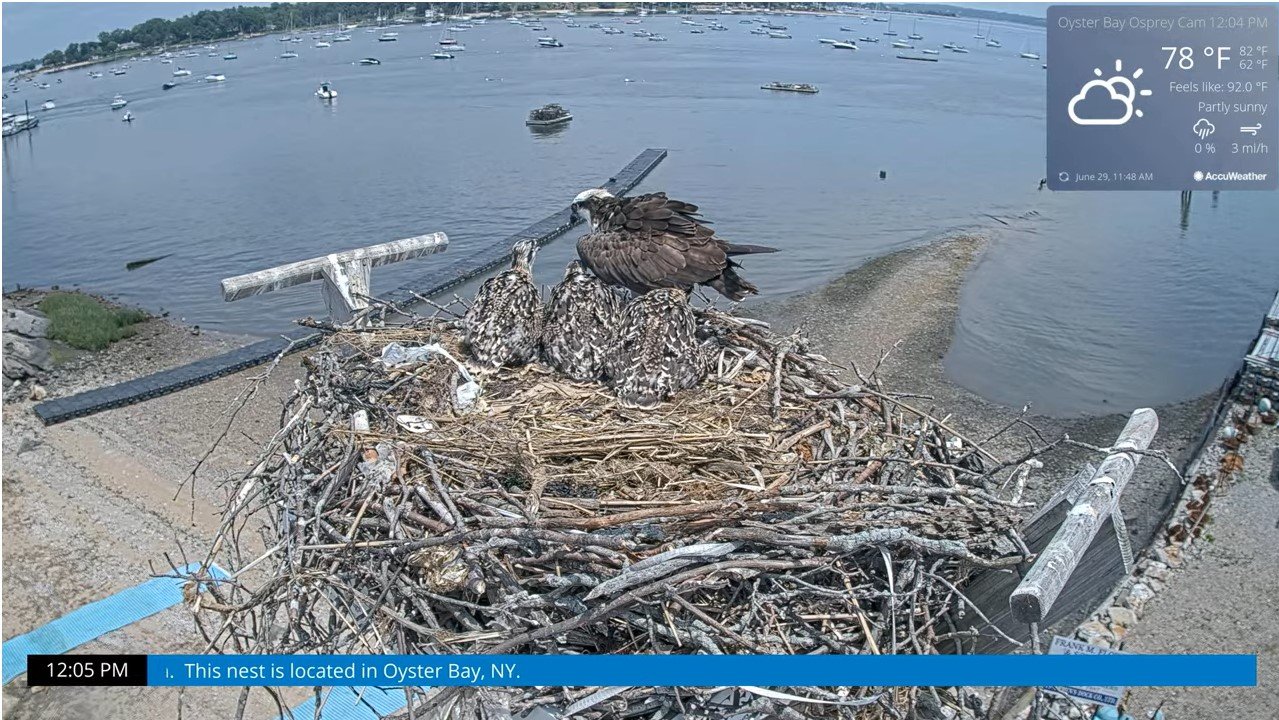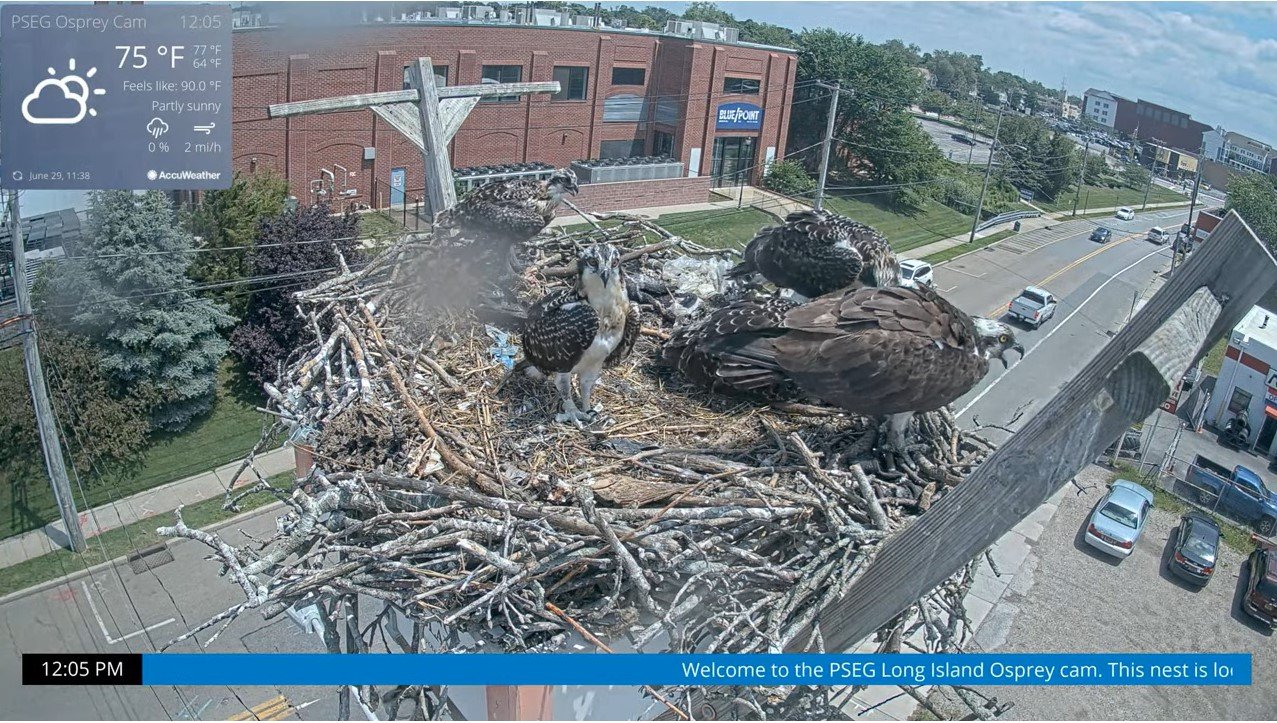R W Fischer




The osprey is a sea hawk with a phoenix story. Not long ago they were seriously endangered by toxins in the food system, their eggs so brittle they cracked in the nest. These beautiful animals are now plentiful, a testament to our efforts at cleaning up. Their strong brown and white colors, striking wing plumage, and uniquely shrill calls make them easy to spot and follow. Their nests are perched atop poles and in trees all over Long Island coastland.
The nests are a pile of debris: big, ungainly sturdy, and unprotected from the elements. Ospreys prefer a water view. They do not seem to care about noise as they have ignored 10 lanes of Sunrise Highway traffic at the Oakdale merge where they have nested for many years. There they have a fresh water trout hatchery, several lakes, a fresh water stream and marsh, brackish tidal marshes and a salt water river all within eyesight. Perfect for raising a family. The nest is a random collection of wood, plastic, towels, shopping bags, belts, paper, leaves, brush, whatever they find. When they arrive in the spring the nest has been beaten up by the winter storms but is still intact. Most often the same pair will return to their old nest and wait until eggs are laid before refurbishing. Occasionally there is drama over who uses the nest. Osprey fights are quick and rarely damage more than ego. No reasonable animal would challenge a bird as fierce as an osprey. The nest often houses one or more sparrow families as well. The collection of debris is so huge that sparrows can build their tiny nests below the owner’s penthouse. They benefit from maintenance done above, managing to raise multiple generations while the ospreys raise one.
Ospreys arrive in March from their winter locations far south, following the small fish they feed upon. They have extraordinary eyesight and reactions, diving into the water from great heights, their trajectory adjusts to allow for the refraction of water. Their legs extend in front moments before they hit the surface, ensnaring a fish in eight long, sharp, opposing claws. Once snagged, the prey is hopelessly stuck. Lifting the fish out of the water takes powerful muscles and long wings, up to 6-feet wide. As they fly back to the nest, they love to show off their catch. Often you will see them change course and fly low over people on the beach, as if to announce their success. They hold their catch tightly, four claws on one foot holding the head, the other foot holding the tail aerodynamically. The poor fish is still squirming.
When an osprey returns with food, the nest comes to life. Chicks crowd together as one parent takes bite sized chunks, linearly devouring the fish from head to tail, leaving not a piece. There is nothing fair about feeding: the most aggressive chick gets the most fish. A runt risks getting pecked out of place, or badly beaten by its siblings. Parents encourage assertive chicks and show no sympathy to a passive chick. The nest is remarkably clean because ospreys have a unique sanitation system. They propel their waste out of the nest by facing the center, leaning as far forward as possible and jet propelling a stream of poop over the edge. It flies far out of the nest before hitting the ground below with a long, rich, white splat.
Osprey are prodigious nest builders. On Ocean Parkway I was once forced to stop my car because an osprey was carrying an enormous craggy branch, 3-feet long and impressively wide, low and slow along the parkway, struggling with the weight. I have seen equal feats mid-bay. These branches are destined to extend the nest. It is the only way chicks are kept from falling off the edge, as their little claws cannot get traction outside the nest center, which frequently gets a fresh beak-full of straw and grass. Watch as the parents move around, though. They are aware of the danger in their huge, sharp claws. They walk with the delicacy of a ballet dancer, using their wings to take weight off their feet so they can move small distances near the chicks.
Once fledged and free of the nest, the ospreys have a party in the air. The entire family goes up, parents nearby but uninvolved as the young ones loop and whirl, using thermals for fuel. You can hear them as they sing and call to each other with their distinctive whistle, clearly enjoying themselves and delighting in making themselves known. It is a unique show of its own, a joy for anyone watching and listening.
PSEGLI maintains cameras overlooking nests in Patchogue and Oyster Bay, available on YouTube. Google ‘osprey long island’ to find them. One camera is located in an idyllic setting overlooking Oyster Bay on the north shore of Nassau County. The bay there is wide with a beautiful backdrop of boats at anchor and an active marine life. The other site is in Patchogue on Montauk Highway, overlooking the Blue Point Brewery. The Oyster Bay nest is quiet, scenic, and loaded with sticks and twigs. The Patchogue nest is much noisier and features the detritus of suburban life. Both nests are equally successful, a testament to the adaptable nature of these beautiful birds that were saved from extinction. They provide my computer background in the spring, far more entertaining than most TV shows.

























